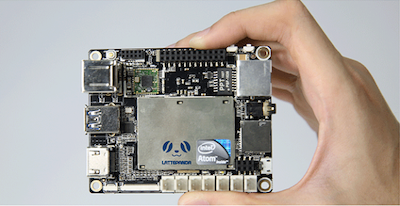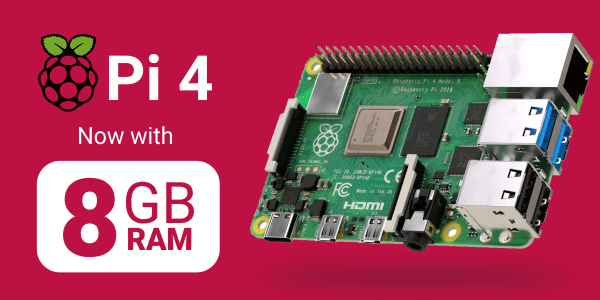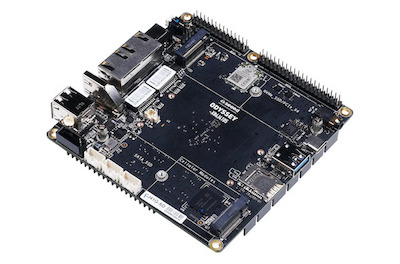Reviews
John Guan - Apr 07, 2023
Single-board computers (SBCs) have been increasingly popular over the years, as they allow for affordable and versatile computing solutions. Among the popular SBCs in the market is the Raspberry Pi, which has captured the hearts of many tech enthusiasts.
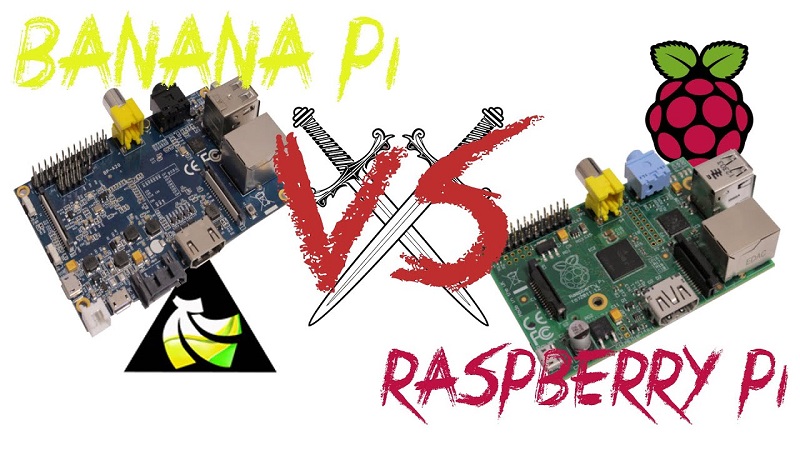
However, the Raspberry Pi is not the only player in this field, as there are several other options available. One of these options is the Banana Pi, a single-board computer developed by the SinoVoip. In this article, we will explore what the Banana Pi is and its main differences from the Raspberry Pi 4.
Part 1: What is Banana Pi?
Part 2: Banana Pi’s vs Raspberry Pi 4 main difference
Part 3: What you should know about Banana Pi
Part 4: Alternative Banana Pi – ZimaBoard Single Board Server
Part 5: FAQs about Banana Pi
Part 1: What is Banana Pi?
The Banana Pi is a series of single-board computers that are designed to be used for a wide range of applications. The first Banana Pi was released in 2014, and since then, the series has grown to include several different models.
The Banana Pi is similar to other SBCs like the Raspberry Pi in that it is a small, low-cost computer that is designed to be used for a wide range of applications. However, there are some key differences between the Banana Pi and other SBCs like the Raspberry Pi.
One of the main differences is the CPU. The Raspberry Pi uses a Broadcom BCM2711, which is a quad-core ARM Cortex-A72 CPU. The Banana Pi, on the other hand, uses a range of different CPUs depending on the model. For example, the Banana Pi M2+ uses a quad-core ARM Cortex-A7 CPU, while the Banana Pi BPI-M5 uses a quad-core ARM Cortex-A73 CPU.
Another key difference is the number of ports and connectors. The Raspberry Pi 4 has a range of ports and connectors, including HDMI, USB 3.0, Ethernet, and more. The Banana Pi, depending on the model, may have a different selection of ports and connectors. For example, the Banana Pi M2+ has HDMI, USB 2.0, Ethernet, and a microSD card slot.
Part 2: Banana Pi’s vs Raspberry Pi 4 main difference
While the Banana Pi and Raspberry Pi 4 share some similarities, there are also some key differences that set them apart.
One of the main differences is the CPU architecture. The Raspberry Pi 4 uses a 64-bit ARM Cortex-A72 CPU, while the Banana Pi uses a range of different CPUs depending on the model. This can have an impact on performance, with the Raspberry Pi generally being faster and more powerful.
Another key difference is the availability of software and community support. The Raspberry Pi has a large and active community of developers and enthusiasts, which means that there is a wide range of software packages and tools available. The Banana Pi, on the other hand, has a smaller community and may not have as many software packages or tools available.
The Raspberry Pi also has a wider range of accessories and add-onsavailable, such as cases, cameras, and sensors. While the Banana Pi does have some accessories and add-ons available, the selection is generally more limited.
Finally, the Raspberry Pi is generally more widely recognized and supported by third-party companies and developers. This means that it may be easier to find tutorials, guides, and other resources for the Raspberry Pi than it is for the Banana Pi.
Part 3: What You Should Know About Banana Pi
Banana Pi is a single-board computer that is similar to the Raspberry Pi. It is produced by SinoVoip, a Chinese company that specializes in developing single-board computers. The Banana Pi has gained popularity among DIY enthusiasts, hobbyists, and even professionals because of its compatibility with different hardware and software.
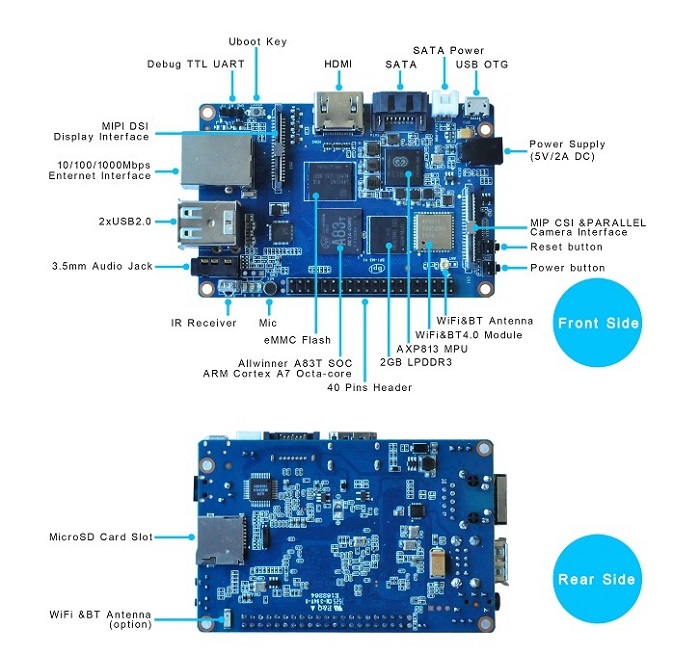
1. Hardware Compatibility
One of the significant advantages of Banana Pi is its hardware compatibility. The board is designed to work with a variety of hardware devices and accessories, including LCD screens, cameras, and different sensors. This feature makes Banana Pi suitable for projects that require more advanced and specialized hardware. Additionally, Banana Pi comes with a GPIO interface that is compatible with the Raspberry Pi GPIO interface, making it easy to use different modules and sensors.
2. Software
Banana Pi runs on an open-source operating system based on Linux. The operating system is compatible with different software packages, making it easy to install and run different applications. Banana Pi supports different programming languages, including Python, Java, and C/C++. It also supports different operating systems, including Ubuntu, Debian, and Android.
3. Availability/Price
Banana Pi is an affordable single-board computer. The price of Banana Pi varies depending on the model and the features. However, compared to other single-board computers with similar specifications, Banana Pi is relatively cheap. Additionally, Banana Pi is readily available online and in different electronic stores.
4. Computer Performance
Banana Pi’s performance is impressive for a single-board computer. The board uses a quad-core processor, and it comes with a dedicated GPU that is suitable for basic gaming and multimedia tasks. Additionally, the board has up to 2GB of RAM, which is enough to run different applications.
5. Memory (RAM) Performance
Banana Pi has impressive memory performance. The board comes with up to 2GB of DDR3 RAM, which is enough to run different applications simultaneously. Additionally, Banana Pi supports different storage options, including MicroSD cards, SATA disks, and eMMC modules.
6. Networking Performance
Banana Pi comes with a Gigabit Ethernet port that offers fast and reliable network connectivity. Additionally, the board supports Wi-Fi and Bluetooth connectivity, making it easy to connect to different wireless devices and networks.
7. Storage Performance
Banana Pi supports different storage options, including MicroSD cards, SATA disks, and eMMC modules. The board has a dedicated SATA port that offers fast and reliable data transfer speeds. Additionally, the board supports different file systems, including ext4, NTFS, and FAT32.
8. Thermals & Power
Banana Pi’s thermals and power consumption are reasonable. The board has a low power consumption, and it runs cool even when performing intensive tasks. Additionally, Banana Pi comes with a power management system that makes it easy to monitor the board’s power consumption.
Banana Pi Pros and Cons:
Banana Pi is a single-board computer that has gained popularity among DIY enthusiasts and developers. However, like any other device, Banana Pi has its advantages and disadvantages. In this section, we will discuss the pros and cons of Banana Pi.
Pros:
Powerful Hardware: Banana Pi is equipped with a powerful hardware system that includes a quad-core processor, powerful GPU, and ample RAM. This makes it an excellent choice for tasks that require high processing power.
Compatibility with Raspberry Pi: Banana Pi has been designed to be compatible with Raspberry Pi in terms of hardware and software. This means that you can use most of the Raspberry Pi accessories and software with Banana Pi, making it more versatile.
Large Community Support: Banana Pi has a large community of developers and enthusiasts who provide support, tutorials, and resources for users. This makes it easy to troubleshoot any issues you might encounter and to find solutions for your projects.
Multiple Operating Systems: Banana Pi supports multiple operating systems, including Ubuntu, Debian, Android, and Raspbian. This gives users the flexibility to choose an operating system that best suits their needs.
GPIO Pins: Banana Pi has GPIO (General Purpose Input/Output) pins, which can be used to control external devices such as sensors, motors, and LEDs. This makes it an ideal choice for IoT projects.
Cons:
Limited Software Support: While Banana Pi supports multiple operating systems, not all software applications are compatible with it. This can limit the functionality of the device and make it difficult to find suitable software for specific tasks.
Limited Community Support: Despite having a large community of developers and enthusiasts, Banana Pi still lags behind Raspberry Pi in terms of community support. This means that it might be more challenging to find specific solutions and resources for your projects.
Limited Accessories: Compared to Raspberry Pi, Banana Pi has limited accessory options. This can limit the functionality and versatility of the device, especially for specialized projects.
Limited Availability: Banana Pi is not as widely available as Raspberry Pi, making it more difficult to find and purchase. Additionally, the pricing can be higher due to the limited availability.
Limited Storage Options: Banana Pi has limited storage options, which can be a problem for projects that require large amounts of storage. Users will need to purchase external storage devices to expand the storage capacity of the device.
Part 4: Alternative Banana Pi – ZimaBoard Single Board Server
While Banana Pi offers great features and performance, it is always good to have an alternative in case it does not meet your specific needs. One such alternative is the ZimaBoard Single Board Server. To learn more details about ZimaBoard below.
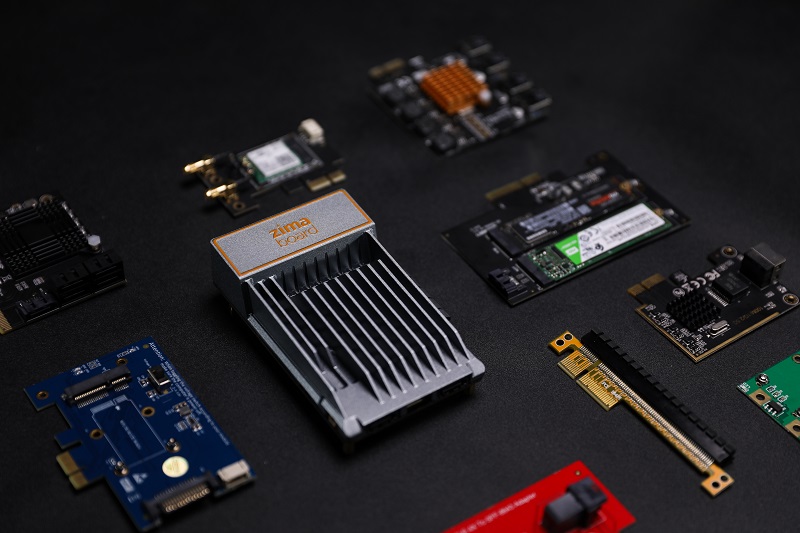
ZimaBoard Single Board Computer Pros and Cons:
Pros:
High RAM Capacity: The ZimaBoard comes with 4GB or 8GB of DDR4 RAM, which provides plenty of memory for running multiple applications simultaneously.
Large Storage Capacity: The ZimaBoard’s built-in SATA connector allows for large amounts of storage to be added to the system, making it ideal for use as a file server or media server.
Dual Ethernet Ports: The ZimaBoard’s two Gigabit Ethernet ports provide fast network connectivity and can be used for load balancing or failover.
Wi-Fi and Bluetooth: The ZimaBoard’s built-in Wi-Fi and Bluetooth connectivity makes it easy to connect to other devices wirelessly.
Cons:
Limited Availability: The ZimaBoard is a relatively new product and may not be as widely available as other single-board computers.
Limited Software Support: As with any new product, the ZimaBoard may have limited software support compared to more established single-board computers.
Despite these cons, the ZimaBoard is a great alternative to the Banana Pi and other single-board computers. Its powerful performance, large storage capacity, and dual Ethernet ports make it a great choice for a variety of applications.
What you can do with ZimaBoard Single Board Computer?
ZimaBoard is a versatile and powerful single-board server that can be used for a variety of purposes. Whether you are a professional developer or a hobbyist, you can use ZimaBoard to create your own customized solutions.
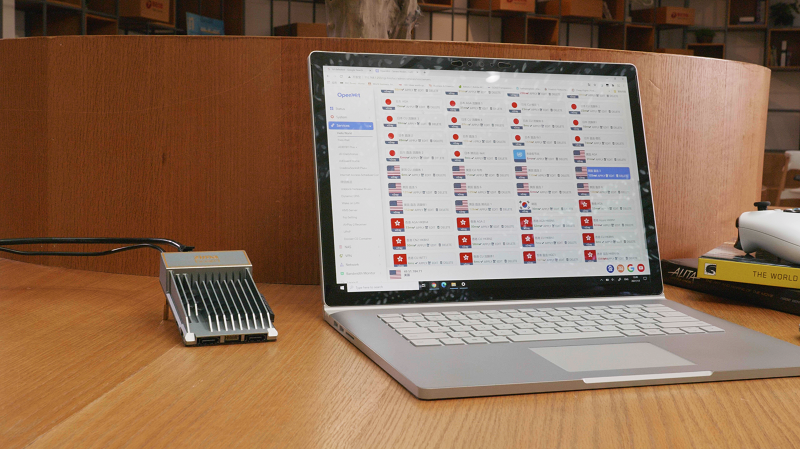
Here are some of the things you can do with ZimaBoard:
Create a home media server
One of the most popular uses for ZimaBoard is to create a home media server. You can use it to store and stream all of your favorite movies, TV shows, and music. With ZimaBoard’s powerful hardware, you can easily handle multiple streams at once, making it the perfect solution for households with multiple users.
Set up a web server
ZimaBoard can also be used to set up a web server, allowing you to host your own website or blog. With its powerful CPU and networking capabilities, ZimaBoard can handle a large number of visitors without any issues. And since it is a single-board server, it is very easy to set up and maintain.
Build your own IoT device
If you are interested in the Internet of Things (IoT), you can use ZimaBoard to build your own custom IoT device. You can connect sensors and other devices to ZimaBoard and use it as a hub for all of your IoT projects.
Develop software applications
ZimaBoard is a great platform for software development. With its powerful hardware and support for multiple programming languages, you can develop and test your own software applications on ZimaBoard.
Create a home automation system
ZimaBoard can also be used to create a home automation system. You can connect ZimaBoard to your smart devices and control them all from a single interface. With its support for popular home automation protocols like Zigbee and Z-Wave, ZimaBoard is a great choice for building your own home automation system.
How to set up the ZimaBoard Single Board Server?
ZimaBoard is a single-board server that offers a range of features and capabilities. It is designed to provide users with a powerful and reliable platform for various applications, including IoT, edge computing, and networking. Setting up the ZimaBoard is a straightforward process that can be completed by anyone with basic technical skills.
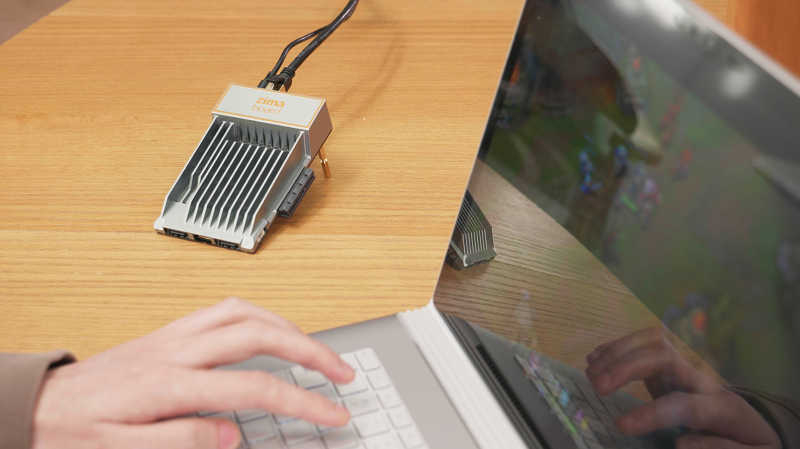
Step 1: Unbox the ZimaBoard
The first step is to unbox the ZimaBoard and ensure that all the necessary components are present. The package should include the ZimaBoard itself, a power adapter, an SD card, and any other accessories that you may have ordered.
Step 2: Insert the SD Card
Insert the provided SD card into the ZimaBoard’s microSD slot. You can use any microSD card with a capacity of up to 128GB.
Step 3: Connect the Power Adapter
Connect the provided power adapter to the ZimaBoard’s power port. Make sure that the power source is stable and reliable.
Step 4: Connect a Monitor and Peripherals
You can connect a monitor, keyboard, and mouse to the ZimaBoard via the HDMI and USB ports. Alternatively, you can also use the ZimaBoard remotely through SSH.
Step 5: Power On the ZimaBoard
Turn on the ZimaBoard by pressing the power button. Wait for a few seconds for the system to boot up.
Step 6: Configure the System
Once the ZimaBoard has been booted up, you can start configuring the system. The ZimaBoard comes with a pre-installed Debian-based Linux operating system. You can customize the OS to suit your specific needs.
Step 7: Install the Required Software
You can install any software that you need on the ZimaBoard using the command-line interface or a graphical user interface. The ZimaBoard supports a range of software packages, including Casaos – Personal Cloud, Python, Node.js, and Docker.
Step 8: Start Using the ZimaBoard
Once you have installed the required software, you can start using the ZimaBoard for your specific application. The ZimaBoard supports a range of applications, including IoT, edge computing, and networking.
Setting up the ZimaBoard Single Board Server is a straightforward process that can be completed by anyone with basic technical skills. Once you have set up the ZimaBoard, you can use it for various applications, including IoT development, edge computing, networking, and home automation. The ZimaBoard’s powerful hardware and software capabilities make it an excellent platform for various use cases.
Part 5: FAQs about Banana Pi
If you’re interested in the Banana Pi, you probably have some questions about this single-board computer. Here are some of the most frequently asked questions and their answers:
What is the use of Banana Pi?
The Banana Pi is a single-board computer that can be used for a wide range of projects. It’s particularly well-suited for projects that require high-performance computing, such as running multiple applications simultaneously or handling large data sets. It can also be used for media streaming, gaming, and other tasks that require a powerful and reliable system.
Will a Banana Pi fit in a Raspberry Pi Case?
No, a Banana Pi will not fit in a Raspberry Pi case. The two devices have different dimensions and port placements, so you’ll need to find a case specifically designed for the Banana Pi.
Is Banana Pi open hardware?
Yes, Banana Pi is an open hardware project. This means that the hardware designs and schematics are available to the public, and users are free to modify and build upon them. This is in contrast to closed hardware designs, which are proprietary and not available for modification or inspection.
How do you power a Banana Pi?
The Banana Pi can be powered through a micro-USB port using a standard USB power adapter. The recommended voltage range is between 5V and 2A, but some models may have specific power requirements, so be sure to check the specifications before choosing a power supply.
Is Banana Pi as good as Raspberry Pi?
The Banana Pi and Raspberry Pi are both excellent single-board computers, but they have different strengths and weaknesses. The Raspberry Pi is generally better suited for beginners or projects that require a lower level of computing power, while the Banana Pi excels at more complex and demanding tasks. Ultimately, the choice between the two will depend on your specific needs and project requirements.
Final Verdict:
The Banana Pi is a powerful and versatile single-board computer that offers a wide range of features and capabilities. With its high-performance computing capabilities, impressive memory and storage, and flexible connectivity options, it’s well-suited for a wide range of projects, from media streaming and gaming to data analysis and more. While it may not be as well-known as the Raspberry Pi, the Banana Pi offers a competitive alternative that is worth considering for those seeking a powerful and capable single-board computer.
